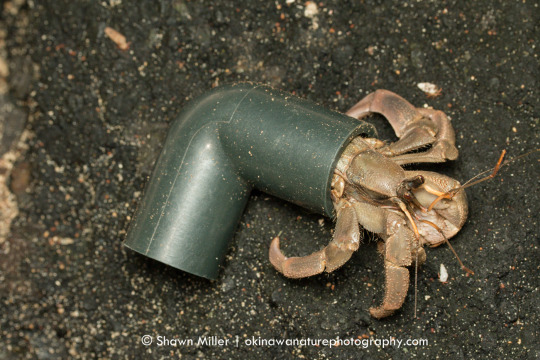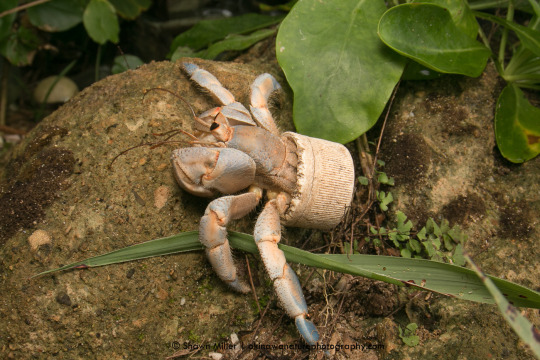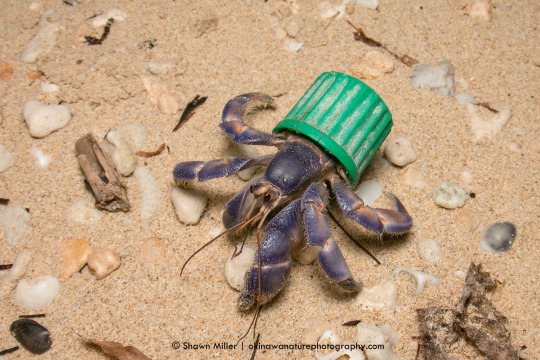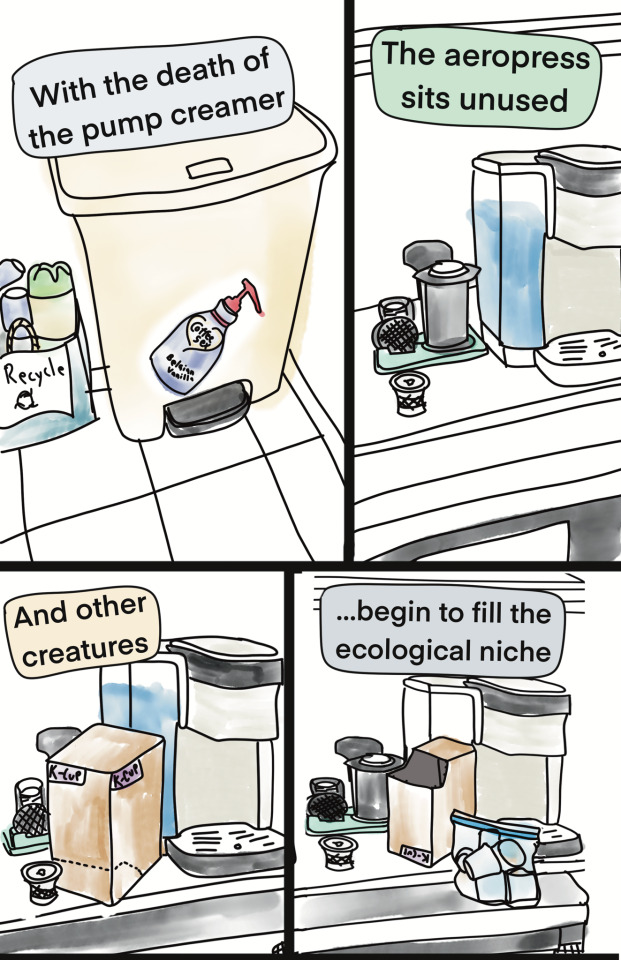#plastic waste
Link
““The Great Pacific Garbage Patch can now be cleaned,” announced Dutch entrepreneur Boyan Slat, the wonderkid inventor who’s spent a decade inventing systems for waterborne litter collection.
Recent tests on his Ocean Cleanup rig called System 002, invented to tackle the 1.8 trillion pieces of plastic pollution, were a success, leading Slat to predict that most of the oceanic garbage patches could be removed by 2040.
Intersections of ocean currents have created the massive floating islands of plastic trash—five slow-moving whirlpools that pull litter from thousands of miles away into a single radius.
The largest one sits between California and Hawaii, and 27-year-old Slat has been designing and testing his systems out there, launching from San Francisco since 2013.
GNN has reported on his original design for the floating device, but his engineering team improved upon it. System 002, nicknamed “Jenny,” successfully netted 9,000 kilograms, or around 20,000 pounds in its first trial.
It’s carbon-neutral, able to capture microplastics as small as 1 millimeter in diameter, and was designed to pose absolutely no threat to wildlife thanks to its wide capture area, slow motion, alerts, and camera monitors that allow operators to spy any overly-curious marine life...
Slat estimates ten Jennies could clean half the garbage patch in five years, and if 10 Jennies were deployed to the five major ocean gyres, then 90% of all floating plastic could be removed by 2040.” -via Good News Network, 10/19/21
#great pacific garbage patch#pacific ocean#pollution#plastic#plastic waste#dutch#california#hawaii#microplastic#good news#hope
76K notes
·
View notes
Photo









(May 12, 2023) We are raising money for a crowd funded research project investigating the cause of blueberry hermit crabs in Okinawa, Japan using trash found on the beach as “homes” instead of natural shells. These hermit crabs are endemic to the southern islands of Japan, and they act as coastal environmental engineers. They are endangered on several islands, and we want to try and understand why they are resorting to beach trash for shells. Please consider sharing this post and donating to the project. The fundraising will be active for the next 45 days (until June 26).
You can find all project details here: https://experiment.com/projects/blueberry-hermit-crabs-with-beach-trash-homes
We suspect that areas with high rates of tourism lead to beach combers collecting natural shells leaving nothing for the hermit crabs to use. It’s possible that overfishing of turbo snails which would naturally provide shells for the crabs may also be a factor. We will survey many sites across several islands in Okinawa to try and determine a cause of this behavior.
We will be working closely with national geographic photographer Shawn Miller (photo credits above) and several researchers in Japan. Additionally, we will complete extensive beach clean ups in the areas we study. Thank you so much for reading!
#conservation#hermit crabs#ecology#biology#research#beach combers#plastic waste#save our shells#make the switch for nature#national geographic#shawn miller#beach trash#beach clean ups#blueberry hermit crab#science experiments#marine science#marine biology#activism#nature#beach#travel#environment
7K notes
·
View notes
Text
When plastic straws were banned, new alternative straws of paper, bamboo, and glass were advertised as more sustainable, eco-friendly, and healthy. Groffen’s team wanted to know if they hold up to the hype, but they found that the majority of them do not.
With the exception of the stainless steel straws they tested, all of the brands they examined—which are commercially available in Belgium—contained chemicals that are harmful not only for the environment, but also for people. Known as PFAS, which stands for poly- and perfluoroalkyl substances, and dubbed forever chemicals, these compounds don’t break down under heat or sunlight and dissolve in neither water nor oil.
For a few decades these PFAS were the darlings of the chemical industry, used in everything from fire-resistant cushions to water-repellant clothing and from nonstick pan coating to disposable plates. Unfortunately, what makes PFAS so durable in kitchenware and other products is also what makes it last so long in the environment. More importantly, in recent years, scientists have linked them to a gamut of damaging health effects, including thyroid disease, high cholesterol, pregnancy problems, liver damage, and several cancers. They have also been linked to adverse reproductive, developmental and immunological effects in animals.
The team found PFAS to be present in 90 percent of the paper straws, 80 percent of bamboo, 75 percent of plastic, and 40 percent of glass ones.
133 notes
·
View notes
Text
A Canadian government plan to track plastics could help put more money into consumers' pockets and keep plastic waste out of landfills.
The government announced Tuesday it's seeking input on a new national plastics registry. Experts say it could create a lucrative system that encourages companies to salvage waste plastic and reimburse Canadians and retailers for dropping off scraps.
"Plastic waste is a commodity like anything else," said Calvin Lakhan, a research scientist at York University's faculty of environmental and urban change. "Right now, we're not doing a very good job of recycling our plastics."
The registry would track various plastic items produced in Canada. Everything from food and beverage containers to household appliances, clothing, tires and fishing equipment could fall under its scope. Government documents say the reporting requirements likely would apply to plastic producers, not consumers.
Continue Reading
Tagging @politicsofcanada
#cdnpoli#canada#canadian politics#canadian news#plastic#plastic recycling#plastic waste#zero waste#circular economy
129 notes
·
View notes
Text
By now, you probably know that 3D printed cosplay props are made from plastic, which produces quite a bit of waste. So, if you are an environmentally conscious cosplayer, it's only fair to ask what steps Dangerous Ladies is taking as a business to cut down on plastic waste, and what materials we are choosing in order to lessen our impact on the environment.
Here at Dangerous Ladies, we primarily print with Polylactic Acid (PLA) filament. PLA is a thermoplastic polyester that is derived from renewable resources. In our case, eSun PLA+ (our preferred filament) is manufactured with corn starch! This means it is biodegradable and recyclable.
You read that right. PLA is recyclable… but it has a catch!
Take a look at our blog on sustainability and cosplay on our website!
72 notes
·
View notes
Text
456 notes
·
View notes
Text
Bleached corals ingest microplastics.
Studies have found that reef building corals ingest microplastics when exposed to temperatures above normal.

Normally,corals rely on the photosynthetic algae on their surface to provide them with energy.

When temperatures rise, the algae are expelled (bleaching) and most corals eventually die from starvation but some corals start feeding on zooplankton in the water column and in turn also take in microplastics.
So how is this a problem? Feeding on large amounts of microplastics can result in:
Bleaching
Reduced growth as energy reserves drop since plastic has no nutritive value
Reduced feeding on nutritious prey
Tissue necrosis( a coral disease that causes peeling of tissues and death)
Reduced mineralisation of coral skeletons thus reduced growth rates
With coral reefs already facing multiple stressors ; global climate change, ocean acidification and water pollution with a short period for recovery, microplastics could worsen the situation putting the survival of coral reefs at risk.
#stem academia#conservation#plastic#plastic pollution#plastic waste#sustainability#sustainablelifestyle#ocean#coral sea#coral reef#artificial reef#marine life#animals#marine biology#microplastics#plankton#bleaching#climate change
150 notes
·
View notes
Text
Btw, if a disabled or mentally ill person (or honestly just anyone who’s really burnt out and exhausted with life, such as caregivers) tells you that they have to use disposables to clean and function in their day to day life, and your response is anything remotely like “well you’re a horrible person because that plastic you just used is killing the planet” I need you to know that you are ableist, classist, and just a shitty person, and I hate you.
Yes, I know that using paper towels and Clorox wipes is not as sustainable or healthy for the ecosystem as just using regular towels and rags. However, I am fucking exhausted all the time, and if I use regular rags, I will not have the energy to clean them. They will sit in my kitchen and get moldy and have to be thrown away anyway. And then my family is living in unsafe conditions because we’re breathing mold spores.
Additionally, we are fucking poor. We don’t have a washer and dryer. If I want to do laundry I have to load it all up in my car, drive across town to the only laundromat, spend most of my day switching things over and waiting for machines to open up, spend about thirty bucks (probably more, because the dryers are shit and never actually dry things on the first cycle), load everything back into the car, drive back home, and then sort and fold and put away everything I just washed.
That is not feasible most of the time, because I am disabled, I don’t have that money to spend, and I am the primary caregiver for our baby who has extreme sensitivities to changes in our routine. I can’t just take him to the laundromat with me, and I don’t have anyone to watch him while I go. Most days I’m not physically capable of carrying baskets of laundry to and from my vehicle. And again, we can not afford the laundromat. Anything that I can do to reduce the amount of laundry we need to wash in a month, I’m going to do.
All of this to say, please for the love of god consider that there are literally thousands of reasons someone might not be doing “clean living” or choosing the most eco-friendly option all the time. We can’t all cut out disposables. I already feel guilty enough that I can’t just function like a normal person, you do not need to butt in and make it worse.
If your activism for the environment and the earth goes so far as to make you apathetic to the struggles and needs of the real actual people around you, you need to reconsider where your morals lie.
(It’s also worth noting that every regular person on the planet together does not generate ANYWHERE NEAR the amount of plastic and toxic waste in a year that mega corporations do in a matter of weeks or months. I’m not saying that the average man doesn’t need to make as many good and healthy choices as they are able, but seriously, most of us are not the real issue here. Go fight the logging and fracking companies killing the ecosystem. Go attack the capitalist mega-corps like Walmart and Amazon and Disney and Apple that discard so much plastic they are almost single-handedly killing the oceans themselves.)
#ableism#classism#ecofriendly#global warming#environmetalists#disability#plastic waste#recycling#things that fucking matter#burnout#mentally tired#mentalheathawareness#chronically ill#text post#nightramblestm
52 notes
·
View notes
Text
youtube
This is also the reason older generations say younger generations don’t know how to fix things!
#Youtube#some more news#cody johnston#right to repair#big tech#fast fashion#planned obsolescence#fuck apple#john deere#elon musk#Tesla#leftist#leftism#socialism#agriculture#U.S.A#recycling#reduce reuse recycle#plastic waste#tech waste#please recycle#capitalism#late stage capitalism
48 notes
·
View notes
Text
Corporations will never voluntarily do the right thing. The EU has done a better job of forcing Amazon to cut down on plastic than the US. We can follow their example.
#plastic waste#amazon#vote blue#boycott amazon#vote biden#vote democrat#end citizens united#democrats#democracy#social democracy#vote blue 2024#tax the 1%#tax the billionaires#billionaires should not exist#vote blue to save democracy#democratic socialism#democrats now socialism later#tax corporations#tax the rich
17 notes
·
View notes
Text
at work and thinking about how I keep forgetting to bring in new coffee creamer, which has made the other staff desperate

13 notes
·
View notes
Link
“Headache-inducing plastic waste such as printer cartridges and plastic bags are being turned into aggregate material for asphalt road mixtures around the country.
Plastic roads have built up a head of scientific steam recently, with scientists and regulators seeing roads as a decent place to reutilize plastic that is difficult to recycle in a cost-effective manner.
Pilot programs are ongoing in Missouri, Pennsylvania, Virginia, California, and Hawai’i, with transportation regulators monitoring performance and durability of the roads, and environmental regulators on the lookout for potential microplastic contamination.
All in all plastic roads could be a big part of future societies, as the programs all show good results, and for the moment at least, no microplastic pollutant runoffs in several states.
Last year GNN reported that a stretch of Australian highway was completed with millions of used facemasks, while another in America has taken to adding shredded tires.
A stretch of road in Hawai’i between Kilaha Street and the beginning of Fort Weaver Road near Cormorant Avenue is testing a recycled polymer mixture in its asphalt that contains the equivalent of 150,000 water bottles.
Virginia officials are testing plastic in six different stretches of roads around Richmond. Results were monitored between summer of 2021 and summer of 2022.
Pennsylvania are testing two quarter-mile road stretches within Ridley Creek State Park using a mixture that contains 150,000 plastic bags.
A shoulder of Highway 99 in Elk Grove near Sacramento, California, is being paved with an asphalt mixture that contains 10% recycled plastic from printing ink cartridges. After looking and performing better than expected, a spokesperson for the CA DoT told the Pew Trust, they have expanded its coverage for further testing.
Likewise, this year’s $3.8 million budget for paving roads in Missouri included a $200,000 extra for the utilization of plastic in the asphalt mixtures.” -via Good News Network, 12/28/22
#plastic#plastic waste#microplastic#plastic pollution#transportation#asphalt#australia#missouri#pennsylvania#virginia#california#hawaiʻi#good news#hope
127 notes
·
View notes
Text

#juul pods#garbage#garbagecore#trash#trashcore#refuse#rubbish#vape#vapelife#disposable vape#vapers#plastic#plasticore#plastic waste#street trash
7 notes
·
View notes
Text

#petrochemical industry#plastic waste#recycling#environmental impact#public health crisis#fossil fuel companies#deception#corporate responsibility#environmental justice#pollution#plastic pollution#recycling limitations#economic factors#health risks#plastic recycling#public relations#lobbying efforts#recycling promotion#industry front groups#corporate strategies#circular economy#recycling research#environmental education#corporate awareness#sustainability claims
10 notes
·
View notes
Text
'Fishing Plastic' - Fine Art Photography Self Portrait By Anya Anti

#fine art photography#anya anti#fishing plastic#photographers on tumblr#women photographers#female photographers#photography blog#photoblog#photo-art-lady#photography#self portraiture#self portrait#female artists#women artists#ecology#ecosystem#conservation#environment#plastic waste#ocean pollution
12 notes
·
View notes
Text
Huge Amounts of Europe's Plastic Waste Ends Up in Vietnam's Natural Landscapes - One Green Planet
3 notes
·
View notes